Mark Sisson's Blog, page 347
February 28, 2013
The Snowball Effect: How Small Changes Can Have a Big Impact
 I don’t think it’s any big secret that the Primal Blueprint flies in the face of conventional wisdom. After all, it’s a different way of eating, moving, and even living to some degree. Beyond the varying specifics like Primal snacks or yellow lensed glasses, however, I think there’s a more amorphous, underlying dimension to the experience. People tell me there’s something about it that changes their vision – how they see everything from marketing ads to cultural traditions, social expectations to personal values.
I don’t think it’s any big secret that the Primal Blueprint flies in the face of conventional wisdom. After all, it’s a different way of eating, moving, and even living to some degree. Beyond the varying specifics like Primal snacks or yellow lensed glasses, however, I think there’s a more amorphous, underlying dimension to the experience. People tell me there’s something about it that changes their vision – how they see everything from marketing ads to cultural traditions, social expectations to personal values.
Adopting (and adapting) the Primal Blueprint involves participating in an alternative choice of sorts, living at least a little bit outside the mainstream routine. Some people relish this element of the experience. Perhaps they already situate themselves on a cultural fringe in some regard and just find the caveman/woman element that much more fun. For others, however, the alternative presents something of a vexation at times, even a stumbling block, particularly if those around them are seated squarely in the conventional realm. Yet, plenty of us make peace (and even find fulfillment) with living slightly on the outskirts of average, intentionally out of everyday touch with some of the central health habits and fads that direct our mainstream culture.
When people first begin toying with the Primal Blueprint, their transition revolves around elements like taste adaptation, menu planning, and exercise revamping. With time, other experiences come into play. They seek out different shopping sources, maybe ordering certain things online, becoming a co-op junkie, or growing some of their own food. They might buy half a cow at a time and start eating organ meat. They may start wearing those weird barefoot shoes (or just skip them altogether). Perhaps they join a different kind of gym or use their current one in a new way. Maybe they drop the gym entirely and work out solely outdoors or put together a CrossFit inspired home gym. They might change where they go out to eat or maybe just don’t eat at restaurants as much anymore. Perhaps over time they cut back their Internet or T.V. at night or spend less time on their phones throughout the day. Oftentimes, they start buying different books or magazines and change what they read online. They may cut some commitments to give them more weekend time outdoors or with family. They move. They switch jobs. They build new social circles. You name, I’ve heard it.
A person goes Primal, and two years later, oftentimes, his or her lifestyle is suddenly more fluid. Her view of work changes. His parenting style shifts. Her social life adjusts. A big time, stressed out suit in the city moves to the country, takes up farming, carries his one-year-old around in a sling, grows a beard and gets himself a Grok tattoo. Sure, that’s a pretty dramatic transformation, but it has happened. A million permutations, a million stories.
I think the key here is context. We accept new choices into our lives and are heartened, even blown away, by the positive changes we experience. Naturally, we want to deepen our commitments, try new aspects of the PB, expand our Primal horizons. To take on the new we inevitably have to give up some of the old. We migrate, perhaps unconsciously, in a new lifestyle direction. What we do with our time, where we spend it, and who we spend it with changes, and the end result often looks less conventional than it did in the beginning. We suddenly realize the personal distance we’ve traversed.
There’s real power in context, of course. As our inner mindsets change, our outer contexts shift and gravitate toward the people, environments, and events that in some way support the life we want to live. Our contexts help us grow into the commitments we make. We organize our schedules around our goals. Why shouldn’t we build our lives around the supports that help us get there, that help us feel good, that help us live well as we define it?
It’s a funny thing, how taking on a countercultural diet – maybe to lose a few pounds, address a chronic condition or gain more energy – can result in deeper changes than we ever anticipated. We start with Primal food or maybe fitness, and with time we end up questioning our participation in other standard practices or our feelings about other common choices. Maybe it’s nothing more than different magazine subscriptions or shoe wear. On the other hand, maybe it’s a major life metamorphosis.
Ultimately, I think it’s part of thriving – to foster congruence in our lives, to have our outer lives align with our inner intentions. It doesn’t mean every friend – or maybe any friend – is Primal. It doesn’t mean we’re raising chickens in our backyard (or would ever want to). It doesn’t mean we all do CrossFit, co-sleep with infants or relish a good liver and onions. The Primal Blueprint, after all, takes the shape of each person’s interest and aim. That said, there’s something to accepting a blueprint that dances along the edge of modern day social norm and the inherent community that this fact builds. It makes for undoubtedly great conversation, the occasional inside joke, and some much valued reflection.
Have you found you’ve shifted your external “contexts” as you’ve lived Primal? Was it a subtle or dramatic shift, an intentional or unconscious adjustment? I hope you’ll share your experiences and perspective on the board. Thanks for reading today, everyone.
Grab a Copy of The Primal Connection: Follow Your Genetic Blueprint to Health and Happiness Today!

February 27, 2013
Co-Feeding: How to Get Your Family Involved with Healthy Food
 Just about every week, I get emails from readers who are trying to get their kids on board with healthier eating. It’s easy enough for us to read about the health benefits of a particular way of life and then enact the changes necessary to attain them, but small kids are ruled by their immediate desires. That’s what makes being a kid so great. Rather than try to stifle that intrinsic part of their being and risk creating the unfortunate abomination known as a tiny, prepubescent, stressed-out adult, what if we could somehow work with their natural proclivities to make healthy food appealing? Wouldn’t that be awesome, effective, and far easier than fighting them?
Just about every week, I get emails from readers who are trying to get their kids on board with healthier eating. It’s easy enough for us to read about the health benefits of a particular way of life and then enact the changes necessary to attain them, but small kids are ruled by their immediate desires. That’s what makes being a kid so great. Rather than try to stifle that intrinsic part of their being and risk creating the unfortunate abomination known as a tiny, prepubescent, stressed-out adult, what if we could somehow work with their natural proclivities to make healthy food appealing? Wouldn’t that be awesome, effective, and far easier than fighting them?
A recent email from a reader gave me a great idea for making this a reality. She called it “co-feeding” (a la co-sleeping) and described it as getting the kids (and all other family members) involved with the shopping, cooking, and eating process. I thought this was a fantastic idea and figured I’d run with it.
After all, food has always been a social phenomenon. Cuisine itself is the transformation of raw dietary fuel – plants, animals, and their associated micro- and macronutrients – into food that appeals to human sensibilities. We cook food and follow recipes and pay attention to presentation and color and all that other stuff because other people are going to be eating it. Without people to appreciate and observe the sum total of a dish, it’s reduced to its base materials and, in my opinion, somewhat cheapened. To a hungry dog, curry is just a big pile of tasty calories (and future diarrhea, maybe). To a strict reductionist/nutritionist, it’s turmeric, coconut milk, ginger, garlic, beef broth, carrots, and onions (and you can go even further down the rabbit hole). To most people, it’s a delicious, rich, aromatic, invigorating, stimulating experience. And so food is about people. If we can involve our families with the food-making process, perhaps they’ll come to appreciate food and make healthier choices on their own, or at least buy into what you’re serving up. Because it’s not just you serving it up; they’re participating, too.
In the past, I’ve discussed the importance of mindful eating and how thinking about what you’re eating in the immediate moment and savoring the flavors, textures, and aromas change the perceived quality of the food and how you respond to it. When we consider food an afterthought, a side dish to whatever’s on TV or on our laptop, or whatever racing thoughts are coursing through our brains, we miss out. We look up from our stupor to find an empty plate, a full belly, and zero recollection of what we just ate. Did we even eat? Maybe there’s room for dessert after all… I digress.
Today, I’m going to throw out some tips and ideas for co-feeding with your family – for getting kids to learn to love real, Primal food just as much as you do. (And on Saturday we’ll have recipes that complement this blog post.) It won’t be a systematic step-by-step detailed outline. Families are too unique, and kids have different needs. I’m confident that everyone will find something useful, though.
Foraging
When foraging for food, parents don’t always have the luxury of leaving their spawn behind. And even if they do have that option, I don’t think they should take it, because it’s a golden opportunity to expose kids to real food.
Let them choose.
Kids (humans, really) like having a choice. When they can make a decision, they feel empowered. They are empowered. Yeah, they might grab the durian because it looks funny and has spikes, or want ten pounds of chicken feet because, well, they’re chicken feet, but so what? They’re getting invested in actual, real, Primal food (and you can make some awesome broth).
Stick to the perimeter.
Yeah, if you traipse down the cereal aisle, that gleaming hall of colorful toucans and cookie thieves and deliciously stale marshmallows, your kid is going to be grabbing junk left and right. The solution is simple: don’t go to the cereal aisle. For that matter, don’t go down any of the junk food aisles. Stick to the produce, the meat, the real food. That way, your kid will still be able to choose, but the choices available will be generally good.
Go to farmers markets.
Grocery stores pale in comparison to a bustling, vibrant farmers market. Where else can your kid be exposed to free-market competition, twenty kinds of kale, a guy selling sauerkraut juice shots, a hippy lady selling magic crystals, and produce with real dirt on it? Plus, farmers markets are generally bereft of junk as a rule.
Give them a basic framework, but let them fill out the details.
When you take your kid shopping, give them a framework for making decisions. Say “I need two green vegetables, two meats, a fruit or vegetable of every color, and a nut,” and then they take it from there.
Make a game out of it.
Tell your kid, or kids, that it’s up to them to come up with the perfect dish. Then, they have to go find all the requisite ingredients. It’s kind of like a scavenger hunt, except you end up eating what you find. Let’s just hope they pick something edible. Winner gets a trophy and accolades, and the loser goes hungry for a night (kidding).
Preparation
Food must be prepared, especially if you want truly Primal food. Plus, as anyone who’s gone and stayed Primal can tell you, making your food forces you to appreciate that food. It’s more satisfying, fulfilling, and nourishing when it comes from your own hands. Kids (and people) may like taking the easy way out when it’s available, but if they literally get their hands dirty in the kitchen, they’re more likely to want to eat the food.
Work on kitchen skills one by one.
This isn’t a sprint, it’s Chronic Cardio. Start slow, and make sure your kids are adept at a skill before moving on to the next one. Skills include washing produce, whisking, beating eggs, emulsification, knife skills, spatula work, tong handling, seasoning, smashing garlic, egg separating, use of the stove and oven, sautéeing, grilling, and the list goes on and on.
Trust them.
Assuming they have full control of their opposable thumbs, functional nervous systems, and reasonable hand-eye coordination, let them cut things with actual sharp knives and handle hot pans. Start with forgiving items like romaine lettuce and celery and graduate to more tricky things like onions and five year-aged gouda. Oh, and even though it may go against your natural inclination, be sure that the sharp knives are truly sharp; dull knives are more likely to slip off the target food and end up in fingers and hands. Have the bandages and first aid ready, of course, because accidents do happen. Just know that accidents are rarely serious and ultimately end up being potent learning experiences. Regarding the pans, shy away from cast iron and stick to stainless until they’re strong enough to handle them adroitly.
Cede control of the spices.
If your kids are going to learn how spices, salt, and other additives affect the dish, let them add them and taste the result. After each addition, have them stir, have everyone take a taste, then report back with their impressions. Over time, they’ll learn what works and what doesn’t. That said, I wouldn’t exactly give them access to a tablespoon and a bag of saffron. Instead, give them a quarter teaspoon to mitigate the potential damage.
Clean as you go.
There’s nothing quite so demoralizing and off-putting as a kitchen in utter and total disrepair following a big meal. Kinda like how new drinkers often swear off booze after that first real hangover, first time cooks might swear off cooking if they have to clean the entire kitchen in one fell swoop. To combat this, clean stuff as you use it. Let’s face it: washing dishes is the worst. If you can break it up into bite sized pieces, it’s not nearly so bad. This is good advice for anyone who spends time in the kitchen, but it’s especially important for parents who want their kids to actually like (or at least tolerate) cooking.
Eating
This may be the hard part: actually getting your kids to eat the food with you. If you’ve got them cooking and shopping with you, you’ve at least got a head start.
Use your hands.
Kids are naturally inclined to eat with their hands, and I’m not convinced it’s all that awful. Choosing foods that work well with fingers will play to their desires. Ribs, drumsticks, lamb chops, cowboy ribeyes, carrots, broccoli, orange slices, cherry tomatoes are just a few examples. Heck, go ahead and eat chili with your hands if you want. Just be prepared for the massive cleanup job after.
Use fat.
A recent study just came out showing that adding fat to veggies helps kids learn to like them (it works on adults, too, I find, especially if you use butter). So, be sure to incorporate plenty of healthy fat in your meals.
Use variety.
You’re going to strike out once, twice, ten times. Eventually, though, you will find some foods your kids will eat and love. You’ll get into a groove, you’ll learn (and shape) their tastes, and things will get easier. But if you keep throwing the same five dishes at the wall that have yet to stick, nothing’s going to change and you’re only going to be frustrated.
When weaning a fussy babe, try keeping them on your lap.
They may not think they’re interested in whatever food you’re trying to get them to eat, but if they’re on your lap, food is constantly whizzing by their face only to be eaten with great relish by the person they look up to most of all: you. Be sure to make lots of smacking noises; make it obvious how much you’re enjoying it, and they’ll eventually want in on it. Watch the diner scene from When Harry Met Sally for an idea of what to do. This should work on kids of varying ages, too, although I wouldn’t recommend trying to place a sixteen year old on your knee.
If there’s one theme running through this post, it’s that people need to have a stake in their food. When you do that, when kids have a role in the decision-making, food-preparing, and cooking processes, they are far more likely to be interested in the end result: a healthy, Primal plate of food. Giving them a personal role in the process also makes them less likely to develop neuroses from having their desires imposed upon by an authority figure. Parents are the ultimate authority in the parent-child relationship, but it shouldn’t be a totalitarian regime that engenders rebellion and resentment.
What about you guys? What’s worked for you? What’s worked on you? Let’s get a nice compilation of tips going in the comments!
Grab a Copy of The Primal Connection: Follow Your Genetic Blueprint to Health and Happiness Today!

February 26, 2013
Making Sense of Baby Carriers
 In recent weeks, I’ve covered the reasons why you should carry your babies, and explored both what to do and what not to do when you do so. Both articles stemmed from numerous reader emails I have received asking about ancestral practices regarding baby wearing and carrying, and whether we might be getting it all wrong in this day and age. Now, in this third and final part of this series, I try to help make sense of the dozens of baby carriers on the market.
In recent weeks, I’ve covered the reasons why you should carry your babies, and explored both what to do and what not to do when you do so. Both articles stemmed from numerous reader emails I have received asking about ancestral practices regarding baby wearing and carrying, and whether we might be getting it all wrong in this day and age. Now, in this third and final part of this series, I try to help make sense of the dozens of baby carriers on the market.
When it comes to transporting an immobile infant, there are seemingly infinite variations, not all of them equal. Palming the kid’s head like you were Michael Jordan and he were a basketball? Impressive, but not optimal, especially once they get big enough for their feet to drag on the ground and slow you down. Carrying the child by the scruff of her neck? A child shouldn’t have a graspable scruff (are you sure that’s not a dog you’re swaddling?). Tossing the kid to yourself as you run down the street in a continuous game of auto-catch? Fun, but not realistic for every occasion.
For the most part, though, it’s hard to get it really wrong. Support the baby’s head, avoid cutting off their airflow, don’t let their legs droop down and flap around, follow the basic rules of babywearing from the last post on the subject, and you’ll probably be fine. Anyone except for maybe a petrified new father can figure it out. Esther Gokhale does make one small but important recommendation – when carrying a baby, keep her back lengthened by positioning your arm under her so that her bottom is slightly behind her rather than tucked inward. A good cue is to imagine your baby has a tail that needs to hang down over your arm.
Eventually, carrying a baby gets old. Your arm gets tired, you start making (mal)adjustments to your posture, and carrying your kid becomes a chore rather than a delight. Plus, it’s nice to have our hands free (to check our phones, of course) as we go about our business. For this reason, we turn to baby carriers.
It’s really easy to become overwhelmed with the sheer number of baby carriers available these days. There’s even a site dedicated to them, with thousands of reviews logged for over a thousand different carriers broken down by type. A parent could spend days reading through all those without coming to a clear, decisive conclusion about what to get. It’s all quite confusing, so let’s try to make sense of it all. You’ve got:
Mei-tais.
Of all the Asian-inspired carriers, mei-tais are the most abundant and widely-liked. Mei-tais are traditional Southeast Asian carriers and essentially consist of a square piece of cloth with straps at each corner. The baby sits on the cloth and the straps are tied around the parent in a variety of ways to secure the child. They can be worn on the front or in the back, and a single mei-tai should be good for a child at every stage of development (I doubt they can handle gawky ten year olds, though) for either parent regardless of size and gender. Many people like mei-tais because they closely resemble backpacks, with adequate support across both shoulders and around the waist. Among the mei-tais, both Kozy Carriers and Babyhawks get fantastic reviews. Here are some helpful videos for wrapping a mei-tai in different ways.
Pouches, both fitted and adjustable.
Fitted pouches are nice because there is no adjusting required. You simply loop the pouch over one shoulder, insert the baby, and go on your merry way. They’re very user friendly. The bad thing is that there’s no adjusting allowed; you have to buy the right size for your baby and, as he grows, you may have to purchase a new one. Of the commonly available fitted pouches, Slinglings Pouch Slings get great reviews.
Adjustable pouches are somewhat trickier to use than fitted pouches, but since they’re adjustable, these pouches can work with growing children. Unfortunately, the best-reviewed adjustable pouch – the Kangaroo Corner fleece – is discontinued. You may able to find used ones.
Padded and unpadded ring slings.
Ring slings are long strips of fabric with rings for easy adjustment. Padded rings slings have padding on the sections that brace against your body, while unpadded rings slings do not. Other than that, they’re pretty similar, although unpadded ring slings appear to be the most popular. Rings slings are almost infinitely adjustable with tons of different wrapping methods available, which gives them a steep learning curve but greater adaptability as the kid embiggens. If you get an “open-tailed” ring sling, which is a ring sling with a bunch of extra fabric at the bottom (the tail), you can discretely breastfeed. Among padded ring slings, the Maya Wrap Lightly Padded Ring Sling and Lite-on-Shoulder Hybrid Sling get the best reviews. The SBP (Sleeping Baby Productions) unpadded ring sling appears to be the best product in the unpadded category.
Structured carriers, which include soft structured carriers and hip carriers.
Structured carriers probably have the easiest learning curve. I mean, who hasn’t worn a backpack at some point? A wriggling baby is a little different from math and chemistry textbooks, but it’s close enough. For soft structured carriers, the Connecta, the Kanga line, and the Kinderpack get the best reviews.
While the Ergo Baby Carrier gets moderately good reviews on the Babywearer site, it’s by far the most popular soft structured carrier in the real world. One of the Worker Bees is about to be a first-time father, and he’s just conducted an extremely scientific field study. The design was rigorous, his methodology was immaculate, and his results were skewered by a panel of his peers. In other words, he asked random babywearing parents what kind of carrier they preferred whenever he came across them in the wild. By far, the majority of carrying parents he encountered used the Ergo and absolutely loved it. You can wear the kid on the back or in the front, and I have it on good authority that 6’6″ males and 5’5″ females can both share the Ergo. For what it’s worth (quite a bit), Esther Gokhale also recommends the Ergo.
Hip carriers seem like they’d get problematic eventually. Unilateral training with heavy weights certainly builds core strength and trains you to resist rotational force, but that’s only good in small, acute doses. I imagine having a baby on your hip – the same hip, no less – all the time would lead to postural distortions, perhaps even chronic ones. If you go with a hip carrier, switch hips and be aware of your posture. The Scootababy and Mei Hip Carrier both get good marks.
Stretchy and woven wraps.
Wraps are probably the oldest type of baby carrier (besides the arms): a long (3 to 6 meters) piece of cloth that is wrapped around both baby and carrier and tied to secure. There are tons of wrapping methods, including ones with single, double, and waist support, but that also means it takes more practice to get comfortable. Luckily, there’s a comprehensive database of wrapping methods.
Stretchy wraps are the most popular, because they’re generally easier to put on. Since they stretch, you wrap the cloth around you, get everything situated, and then “pop” it open to make room for the baby. Because they’re so stretchy, they’re best suited for smaller babies. Older kids may sag too much. The best reviewed and most popular stretchy wraps include the Cuddlywrap, the Hug-a-bub, and the Moby.
Since they don’t “pop” as much and you generally have to include the child in the initial wrapping, woven wraps are tougher to get the hang of, but they can handle larger children as well as infants. The best reviewed and most popular woven wraps include the Storchenwiege, the Didymos, and the Gypsy Mama wrap.
Now, I’m no expert. Like I said before, Carrie and I just did the good ol’ classic carry method using our arms. Ultimately, you’re gonna have to just try some out and see what works best for your situation – just as we did. I imagine you can always buy a couple carriers and return the one that doesn’t work. You might also try finding a birthing center near you, as many birthing centers offer classes where you can try on a bunch of different carrier types and learn how to use them before making the big decision. Once you arrive at a wrap, Craigslist is a great place for finding used versions.
Whatever style carrier you choose, it’s tough to go really wrong. Good options exist in every category. Every carrier has its proponents, and parents have been using thousands of different carriers to truck their babies around for tens of thousands of years. Find one that works for you and your baby and your needs and take a deep breath, cause it’s going to be okay.
Now let’s hear from you guys. What carriers did you use, or are you using, to carry your baby? Which ones worked, which didn’t, and why? Thanks for reading!
Get All Three Primal Cookbooks, an Apron and More in The Primal Blueprint Chef Kit Today!

February 25, 2013
Dear Mark: Fruit Wax, Placentophagy, and Second Hand Smoke
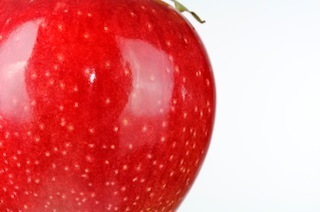 For today’s edition of Dear Mark, I’ll be covering several topics. First, I cover fruit wax, that lovely layer of ultra-thin sheen applied to many fruits and vegetables in the grocery store. Is it harmful or innocuous? Find out below. Next up is one that makes most people extremely squeamish: placentophagy, or the consumption of the placenta by the mother following birth. Does it do anything? Should people do it? What’s the deal with it? Finally, I field a question from a guy who hangs out in a bar for a few hours a week with his friends. All good, right? Unfortunately, this particular bar allows smoking, so he’s wondering whether or not he’s doing any real damage to himself from exposure to second hand smoke.
For today’s edition of Dear Mark, I’ll be covering several topics. First, I cover fruit wax, that lovely layer of ultra-thin sheen applied to many fruits and vegetables in the grocery store. Is it harmful or innocuous? Find out below. Next up is one that makes most people extremely squeamish: placentophagy, or the consumption of the placenta by the mother following birth. Does it do anything? Should people do it? What’s the deal with it? Finally, I field a question from a guy who hangs out in a bar for a few hours a week with his friends. All good, right? Unfortunately, this particular bar allows smoking, so he’s wondering whether or not he’s doing any real damage to himself from exposure to second hand smoke.
Let’s go:
How about an article on the effects of wax that is put on apples and other fruits and vegetables at supermarkets?
Cheers,
Journey
The idea of wax on your food sounds a little unsettling, but I don’t think it necessarily poses a health risk. Let’s look at the various sources used:
Carnauba wax, drawn from the carnauba tree, seems quite safe. Toxicology studies on rats and dogs found it to be non-toxic, even to developing fetuses.
According to European officials (who, compared to the FDA, tend to be less lax when it comes to approving food additives), candelilla wax is also non-toxic.
Shellac wax comes from a kind of beetle, and officials are still trying to determine its safety. It’s probably not a big issue, though.
Though it’s more expensive, food producers sometimes use beeswax. Beeswax is safe (as anyone who’s ever chewed on honeycomb could tell you).
Besides, they’re just replacing the natural wax that gets removed during processing. From what I can tell, all fruits produce a thin layer of wax as a protective barrier between them and their environment, mostly to repel water and prevent moisture from escaping the fruit. In fact, the major component of natural apple wax is ursolic acid, a powerful water repellant (PDF). If you’ve ever plucked an apple from a tree, rubbed it, and gotten white powder on your hands, that’s the natural wax rubbing off. Our attempts to replicate, replace, or modify natural components of foods often get us into trouble, but I don’t think fruit wax is one of these instances. Just peel the fruit, if you’re worried, and be on your way.
One caveat: some conventionally-grown fruits may have a petroleum-based wax. I would avoid those if I were you, so be sure to ask the head of the produce department what kind of wax was used on the fruit you’re considering. They should have that information.
One more caveat: conventional fruit that travels a great distance – like, say, from Chile to California – may be treated with a fungicide in addition to a wax to prevent contamination. If that’s the case, you’ll probably want to peel your fruit, or give it a light wash with a vinegar-hydrogen peroxide-water solution. Or, just, ya know, buy local when possible. Produce at farmers’ markets generally doesn’t have wax on it.

Love the few topics recently on babies (co-sleeping etc).
I am wondering what your thoughts are on Placenta Encapsulation? Do you think our primal ancestors ate their placentas? How beneficial could this be to new mothers?
Tara
Most mammals eat their placenta after giving birth. Primates (both high and low), carnivores, rodents. Not just the carnivores, either. Herbivorous cows will readily eat the placenta, perhaps the only time in a cow’s life that she ever feels the need to eat animal flesh. Only marine mammals and certain semi-aquatic mammals do not for obvious logistical reasons. Marsupials don’t do it (the placenta is resorbed upon birth), but they do avail themselves of the birth fluids.
Opponents of placentophagy dismiss the relevance of other animals consuming their placentas with claims that they only do it to “hide the smell” from predators. Even if that were the primary motivation (and I doubt it is, seeing as how firstly, top predators with no hope of being prey themselves also practice it and secondly, all the other birth fluids that aren’t eaten are just as likely to attract attention), just because a trait appears to be selected for its benefit to immediate, direct survival doesn’t preclude it from offering other benefits. Monkeys aren’t drawn to sweet fruits because of a conscious desire for vitamin C and flavonoids. They just like the sugar. Evolution can be tricky and devious, and I strongly suspect there are other, deeper reasons for the ubiquity of placentophagy.
There’s actually not a ton of research. In 1980, a review of the literature (PDF) contains some interesting stuff:
Otherwise herbivorous mammals aren’t driven to placentophagy because of the sudden proximity of free (organ) meat; you can present other types of meat to mammals immediate after delivery and they’ll still prefer the placenta.
Very little evidence of placentophagy exists in the anthropological literature. In fact, many cultures explicitly forbade placentophagy. One exception is China, where placentophagy has been used in traditional medicine for over 2,000 years.
Among virgin rats given the opportunity to eat a placenta, placentophagy is extremely rare. They’re just not that into it. After their first delivery of a pup, however, they become “enthusiastic placenta-eaters.”
A 1954 human study found that 86% of new mothers given placenta experienced a boost in milk production and flow, while just 33% of the mothers given an identical preparation of beef experienced improved lactation.
Placenta-deprived rats showed no difference in postpartum estrus when compared to rats who were allowed to eat the placenta.
In rare cases, mothers experience an immunological rejection of the fetus, which can have obviously negative effects on its viability. Placenta eating may improve the mother’s immune response to the presence of a fetus in later pregnancies by preventing the formation of fetal tissue antibodies. Totally hypothetical, but interesting.
So no, concrete benefits have yet to be established. That doesn’t mean it’s totally baseless as a practice, though. Placenta is apparently rich in iron, and iron deficiency is a possible cause of postpartum depression – maybe it’s a reliable way for mammals to obtain iron in an iron-deprived state? It may also affect pain suppression following birth by way of endogenous opioid receptors.
There are reports of negative reactions to encapsulated placenta, but that may be due to the presence of other additives. This woman, for example, who regrets eating her placenta and had numerous negative reactions, had it encapsulated with unknown “cleansing herbs.” As we know from last week’s post, herbs can have powerful effects on our physiologies – and they’re not always beneficial. It might be worth it to keep the placenta pure and free of additives, no matter how innocuous and helpful they sound. Actual placenta seems fairly safe, even if it isn’t doing anything beneficial.
I’m intrigued by the idea of placentophagy, but I’m not convinced it’s vital. Humans don’t appear to have a biological imperative to practice it. At least, not like other mammals do. That said, many women swear by it as a way to stave of depression and provide energy. It’s harmless, so I can’t see a reason not to do it if you’re interested.
Dear Mark,
I am not a smoker, but most of my friends are and we typically hang out at a bar that is still not smoke free about once a week for a few hours. I’ve tried to do a little research on the amounts and time exposure to second hand smoke and amount of damage, but can’t find much quantitative stats. Was hoping you might have a little more insight into how much and the potential harmful effects would be?
Thanks for all the work you and your team do with the website. It is very beneficial.
Nathan
Well, one study found that service staff working in places that were not smoke free gradually accumulated levels of NNK, a tobacco carcinogen, at a rate of 6% every hour. That’s worrisome, seeing as how NNK (or Nitrosamine 4-(methylnitrosamino)-1-(3-pyridyl)-1-butanone) is what researchers typically use to reliably induce lung cancer in lab rats, and it promotes cancer in human in vitro studies (you can’t exactly run an RCT where you give actual humans a known carcinogen). Another study found that just 20 minutes of second hand smoke exposure was enough to negatively affect breathing function in humans. You could probably argue about the relevancy of their setup to your situation (were they emulating smoking in a car or a bar?), but 20 minutes is worrisome.
Second hand smoke is demonstrably bad for you, regardless of what industry-funded studies say, but hanging out with friends is demonstrably good for you. What to do?
Pick a new spot. I’m sure there are smoke-free bars around. If there aren’t, suggest a new genre of venue entirely to your friends.
Support your detoxification ability. One study found that pycnogenol, a naturally-occurring bioflavonoid, enhanced the body’s metabolism of NNK and reduced its carcinogenic effects on the lungs (though not on the liver). Pop a few before going out to the bars, if you insist on it. Pycnogenol has also been used in cigarette filters to scavenge free radicals, reduce mutagenicity, and detoxify smoke as it flows through the cigarette itself (better than nothing, I suppose). A beta-carotene/vitamin E/vitamin C cocktail may also mitigate the damage done by NNK and second hand smoke.
In short, avoid the second hand smoke if you can, but if you can’t (and even if you can), at least maintain a consistent intake of polyphenol and antioxidant-rich vegetation. In your case, I think the benefit of hanging out with friends probably outweighs the risk of a few hours of second hand smoke exposure. It’s not that second hand smoke is safe; it clearly is not. It’s that socializing is essential.
That’s it for today’s post, guys. Leave a comment and thanks for reading!
Grab a Copy of The Primal Connection: Follow Your Genetic Blueprint to Health and Happiness Today!

February 24, 2013
Weekend Link Love

In case you haven’t heard, we’ve got a Dream Team shaping up for PrimalCon Austin 2013!
Tracy Barksdale and Matthew Lee Willis present their awesome True Nature Training obstacle course.
Michelle Norris (Paleo Fx Queen) and Instinct Catering offering deluxe salad bar, quail, paleo carrot cake, mustard/mushroom roast beef, baked sweet potatoes, kale pesto shrimp, honey shredded pork BBQ, and much much more!
Evening entertainment: Fat Burning Man Abel James will display his renaissance talent with a one-man music extravaganza
Evening entertainment: Paleo comedian Dan French presents his stand-up act, “The Comedians Diet“
Learn to run with Valerie Hunt; Learn to energize your morning with Angelo dela Cruz; Learn to prevent and rehab injuries with Dr. Dave Cohodes; Learn all the things you can do with a kettlebell with William Vives, and many more presenters!
Stay cool! Enjoy urban trail hike to the one-of-a-kind Barton Springs natural swimming pool
Standup paddle on Town Lake!
Wanna hang with me? Bring your Ultimate Frisbee A-game! Or we can just enjoy some extensive leisure and Q&A time.
Reserve your spot today before it’s sold out just like PrimalCon Oxnard and PrimalCon Lake Tahoe 2013.
Professor Hamilton Stapell, PhD, who sits on the Evolutionary Studies Board at SUNY New Paltz, wants to understand the size, composition, trajectory, and commonalities of the ancestral health movement. To do it, he needs your help. Spend a few minutes to fill out his survey if you can.
Research of the Week
Perhaps getting down to superhuman levels of leanness isn’t so healthy: a recent case study of a natural bodybuilder showed that dropping from 14.8% to 4.5% body fat severely lowered strength, testosterone, and “mood disturbance.”
It seems our paleolithic ancestors had more diverse oral flora populations and subsequently far healthier teeth than modern people. Now all we need is a time machine and some breath mints.
Interesting Blog Posts
The evolutionary argument for snuggling.
Make sure the sound is on for this. Oh, and have a bib handy.
Media, Schmedia
From the NY Times comes a startling piece about the addictive junk food industry. Simply put, these guys know exactly what they’re doing. I especially liked how the daughter of the inventor of Lunchables doesn’t let her own kids eat the things.
SF Giants outfielder Hunter Pence has gone paleo. He talks about his new diet and propensity to “crush kale” in this video. Does the speaker sound a little robotic to anyone else?
Everything Else
The demise of play, and what it means for children (PDF).
How Indian farmers are using husbandry, skill, and attention rather than GMOs, chemicals, and industrial ingenuity to produce the best yields they’ve ever seen.
You’ve heard the rally cry to “Eat Real Food!” But is it enough to just eat real food? Read the “Eat RICH Food” manifesto.
We’re growing organs! Seeing as how they have plastic backing, though, I eagerly await the first liver implantee who’s up on the literature to demand a BPA-free one. Then someone will uncover research about how even BPA-free plastic backings are potentially xenoestrogenic, and we’ll be back to square one.
Recipe Corner
How to cook hearts, liver, and gizzards in four or five different ways.
When life gives you a big pile of massive shrimp, make Mexican lemonade prawns.
Time Capsule
One year ago (Feb 24 – Mar 2)
Can We Feed the World on the Primal Blueprint Diet? – Part 1 – Assuming the question is even a valid one, what would happen if we tried to do it?
The Restorative Power of the Personal Retreat – Why we should all get outta Dodge from time to time.
Comment of the Week
Stretch! When I get done stretching I just feel like puddy and want to go to bed. Even better if I can get someone else to stretch me!
-I want to feel like Puddy, too.
Get All Three Primal Cookbooks, an Apron and More in The Primal Blueprint Chef Kit Today!

February 23, 2013
Turnip & Bison Scramble
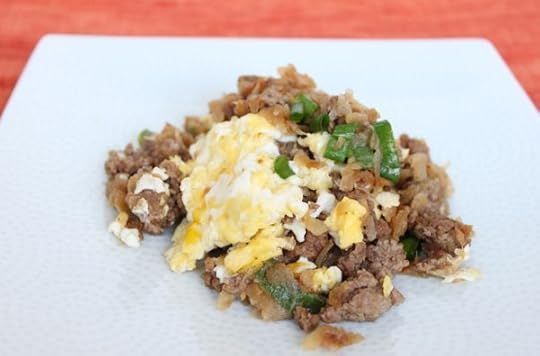
The sweet flavor of turnips adds mild but fantastic flavor to this hearty bison & egg scramble. Garnish with green onions for a simple but super-flavorful breakfast. Or, use almost the same combination of ingredients to bake a Primal Breakfast Casserole.
Turnips taste a bit like a cross between a radish and a potato. When cooked, the spicy flavor mellows and a gentle sweetness comes out. Smaller turnips tend to be less spicy than larger ones and have milder flavor overall. If possible, buy turnips with the greens still attached and scramble the greens in, too.
If your usual scramble is getting boring, this recipe will perk things up in the morning, or evening for that matter. This scramble is great for dinner, too. And don’t be shy about adding hot sauce; it gives this dish the perfect kick.
Serves: 4
Time in the Kitchen: 25 minutes
Ingredients:

2 tablespoons olive oil, coconut oil or butter (30 ml)
1 pound small turnips, grated (450 g)
1 pound ground bison (or beef) (450 g)
4 eggs, whisked
4 green onions, chopped
Salt and pepper
Instructions:
Heat the oil/butter in a 12-inch (30 cm) skillet over medium-high heat.
When the skillet is hot, spread the turnips out in an even layer. Cook the turnips for 5 minutes, stirring only once or twice, until lightly browned and soft.
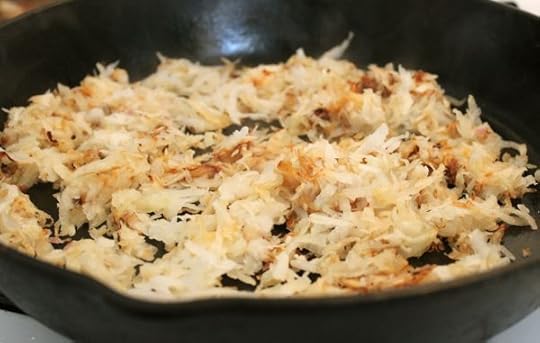
Add the ground meat. Salt and pepper the meat and break it up as it cooks. Ground bison will cook in about 5 minutes, beef and other types of ground meat might take slightly longer.
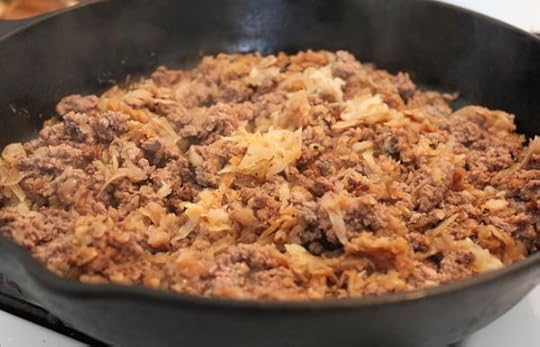
Pour in the eggs. Stir until cooked.
Add the green onions and serve.

Get All Three Primal Cookbooks, an Apron and More in The Primal Blueprint Chef Kit Today!

February 22, 2013
I Am Finally on the Right Path to Optimum Health and Happiness
It’s Friday, everyone! And that means another Primal Blueprint Real Life Story from a Mark’s Daily Apple reader. If you have your own success story and would like to share it with me and the Mark’s Daily Apple community please contact me here. I’ll continue to publish these each Friday as long as they keep coming in. Thank you for reading!
 Mark,
Mark,
Whenever someone asks me about my history with Ulcerative Colitis I respond with something along the lines of, “It feels like a bad dream that will forever be imprinted in the back of my mind.” It was 2006, my senior year of high school, everything was going fairly well. I was a healthy (or so I thought) 6’3″, 180 lb. 18 year old about to graduate high school and head into the next stage of my life: college. However, life had different plans in store for me. Around my second semester I began to feel consistently nauseous. It felt like anything I ate (S.A.D. mind you) would just pass right through me as though I hadn’t absorbed any energy/nutrients. I figured it was a relatively normal side effect from consistent partying that year, though it persisted. Bouts of nausea would come and go, as would horrible abdominal pains that would make even the toughest man curl into the fetal position. I decided it was time to get checked out. I had my first colonoscopy done within weeks of my first symptoms.
“You have Ulcerative Colitis,” the doctor said. I remember my mother and I looking at each other absolutely confused. Neither of us had heard of this illness before. He proceeded to inform us that Ulcerative Colitis is a form of Inflammatory Bowel Disease, which is an inflammation of the colon. I remember pondering for a moment about what all of this could mean. I finally looked up and asked, “So what do I do?” He responded with, “Well, we can treat it with different medications depending on which one you is most beneficial to you.” “Treat?,” I thought. “You mean I have to live like this for the rest of my life?” I remember the doctor’s face vividly…it was an expression of reservation, confusion, and sadness, as if he were trying to formulate the wisest, yet least alarming way possible. “Not necessarily. A lot of people go into full remission with the right medication.” I carefully considered his response and asked, “How is this disease caused?” He looked back at me regretfully, “Unfortunately we don’t really know.” I didn’t know what to say to that. Still completely shocked and puzzled at what I was told, I continued through the next few months now under the supervision of a gastroenterologist and given several medications to take daily.
Sadly, things only got worse from there, I missed my college SAT tests on three different occasions due to having virtually no energy, constant joint and abdominal pains, as well as never-ceasing nausea. My friends and family would wonder where I was, why I wasn’t answering their phone calls, and why I would never leave the house anymore. My attempts to eat were pitiful, and as a result I was losing weight fast. Fast-forward two years later…After several failed medications and treatments from pharmaceutical to alternative, I ended up at a emaciated weight of 127 lbs only sleeping perhaps 2-4 hours per night.

I’ll never forget the feeling I had during this period of my life. It was as if I was on the brink of life and death, a sort of limbo. Nothing seemed real anymore. After stubbornly refusing to go to a doctor (due to my strong distaste for the medical field at that point), my father more or less forced me to our family clinic. My family doctor looked me over with noticeable concern, checking my blood pressure/pulse three separate times. He looked up at me and said, “You need to go to the hospital immediately.” My dad quickly rushed me to the E.R. and within an hour or so I was wheeled into a room and pumped full of pain-killers and fluids. I remember my father telling me what the doctor had told him, which is something I’ll never forget, “If you would have brought him in any later, he could have died.”
The good news is I stabilized, albeit only temporarily. Through the following months my weight shifted like crazy, the medications stopped working, and I was back at square one. All of the false hope I was getting from each new medication I would try and ultimately fail was taking its toll on me not only physically but mentally as well. My only other option to consider was surgery, in which I finally agreed to. My doctor recommended a three-step surgery. My first surgery was a total colectomy (removal of the entire large intestine) resulting in my need to wear a colostomy bag for nine months while my surgery site healed. My second step was to construct a “J-pouch,” which is basically the conversion of part of your small intestine into a a “J” shape to form a make-shift colon. Step two lasted a few months to let the J-pouch heal up while I still used the colostomy bag. My third and final step was to reconnect the plumbing, so to speak. This was one of the best decisions I have ever made and I don’t regret it for a minute.
My symptoms decreased to a manageable level, allowing me to eventually become independent, living and working on my own. Though the actual Colitis was at a stand-still, I was constantly bloated and sick, and my J-pouch would develop chronic pouchitis (infection of the pouch) which would be temporarily resolved by very powerful antibiotics such as Flagyl and Ciprofloxacin, but would eventually reappear. All of these chronic infections I was getting didn’t make sense. I was cured right? This shouldn’t be happening.

Well that’s when I really began analyzing my diet, which eventually brought me to your book, The Primal Blueprint.
When I finally ditched the SAD diet and started living primally, (eliminating processed foods and most importantly, GRAINS and adding more healthy fats, plants, and animals) I noticed the pain had been reduced to a minimum, my weight stabilized, and I had no more bloating which would usually appear after a good carb/grain-dense meal. This seemed to be working for me, so I stuck with it. After several months of living primally, at the age of 24, a stable weight of 182 lbs, and a height 6’4″ I can safely say that I am in the best shape of my life and feel better than I ever did pre-Colitis. My energy levels are stable. In fact, I hardly ever get mid-day crashes unless I eat something I shouldn’t (which only reminds me that I’m moving on a path towards the dark-side and I better recalibrate.) I lost over 30 lbs. of fat and gained a significant amount of lean muscle mass, but most importantly, is that I feel healthy. While I may never be “normal” again, I know that I am finally on the right path to optimum health and a life full of happiness. Thank you Mark for the selfless wisdom that you have imparted to myself and many others that have conquered their trials and tribulations via The Primal Blueprint.
From the bottom of my heart. Thank you.

Kyel
Grab a Copy of The Primal Connection: Follow Your Genetic Blueprint to Health and Happiness Today!

February 21, 2013
12 Healthy Ways to End the Day
 After last week’s post on healthy ways to begin the day, how could I not cover the flip side? Just as our mornings can mirror scenes of rampant pandemonium, evenings for many people are remarkably unhealthy in their own right. We collapse and barely move from the couch. We spend hours in front of media entertainment, basking in blue light way past our intended bedtimes. We succumb to the day’s stresses and take them to bed only to lose the chance for mental rest as well as physical relaxation. There’s a better way of course. It doesn’t take much hoopla or energy to make for a healthier or more Primal evening, but the benefits will carry us through the night hours and then some.
After last week’s post on healthy ways to begin the day, how could I not cover the flip side? Just as our mornings can mirror scenes of rampant pandemonium, evenings for many people are remarkably unhealthy in their own right. We collapse and barely move from the couch. We spend hours in front of media entertainment, basking in blue light way past our intended bedtimes. We succumb to the day’s stresses and take them to bed only to lose the chance for mental rest as well as physical relaxation. There’s a better way of course. It doesn’t take much hoopla or energy to make for a healthier or more Primal evening, but the benefits will carry us through the night hours and then some.
Enjoy Physical Touch
Yes, sex was on last week’s list, but let’s expand the concept. Cuddling your kids, massaging your partner’s shoulders, or petting your dog or cat gives you a pleasant shot of oxytocin, which can help you relax and fall asleep.
Fast
Food intake, like light and sound, can trip (or trick) our circadian rhythms. Finish dinner and call it a day food-wise. Your body will benefit from the longer stretch without metabolic stress, and you’ll likely sleep better.
Choose the Messages That Bookend Your Day
Just as I think it’s important to begin the day with the messages that set the course for our morning, what we end the day with can have repercussions as well. What thoughts do you want to bring to your sleep (or subsequent lack thereof)? Consider that the local news or that hefty financial bestseller might not inspire the deepest repose. Skip the doom and didacticism in exchange for something inspiring or plain old escapist.
Carve Out Some Solitude
In that spirit, claim a little time for yourself each night – especially if you’re at work all day. Everyone could use the time to hear his/her own thoughts. Enjoy the mental space for doing whatever activity feeds and relaxes you or for doing absolutely nothing.
Set an Alarm to Go to Bed
How many of us lose total track of time as we go about our evenings? Whoa, how did it get that late? I’m not a big fan of alarms for waking up, but they can be a great reminder to turn in when you should and not when you finally remember to.
Create Order for the Next Day
A few minutes tonight will allow you to begin the next morning without undue stress and turmoil. Take care of business, write your to-do list, and you’ll sleep better knowing you’re ready for the day.
Power Down
I’ve written pretty extensively about how blue light throws off our circadian rhythms. As countercultural as it is to power down at night just when “Must See T.V.” is at its height, your health is more important than some late night show. Turn off the electrical equipment (including the smart phone) as early as possible in the evening, and dim the lights at least an hour before turning in. Fire is a nice alternative – and Primal to boot.
Spend Time in Natural (Outdoor) Darkness
I think it’s strange how we tend to avoid being outdoors once the sun sets. At no time in our evolution was this ever the case. Sure, there’s crime in many neighborhoods, but when we put the fear in perspective given our individual environments, do we give ourselves reasonable opportunity to enjoy the moods and views of the darker hours? When and wherever you can, spend some evening hours under the night sky. Notice how much different you feel there than you do simply parked on the couch.
Move
Primal truth be told, it’s never a bad time to move, but there are specific benefits to working out at night. A University of Chicago study found better hormonal responses (cortisol, thyrotropin, and glucose) in subjects who exercised in the evening or nighttime as opposed to the afternoon or morning. Even if you’re somebody who prefers to put in the heavy stuff early on in the day, use the evening as a time when you can work in some low level activity (e.g late walk around the neighborhood). Get in that last bout of activity a couple hours before bed, and then you’ll feel that blissful afterglow descend right as you’re ready to hit the sack.
Incorporate Some Mindful Movement
It’s movement, yes. Most people I know, however, see it as more relaxing. (Perfect for evening, no?) It could be a few restorative yoga poses, a few minutes of Tai Chi, or some focused stretching. Neuromovement expert, Anat Baniel, says any time we bring awareness to our movement, we’re creating new pathways. We’re working our muscles and our minds – increasing the creativity and productivity of both. Use the time to get out of your mind, so to speak, and into your body.
Follow a Ritual
I had a roommate once who literally did the exact same thing every night – same order, same timing, same activities for the same duration. After a month, his nighttime routine made me tired. When it comes down to it, we Homo sap-saps are complicated and all, but we’re just about as trainable as Pavlov’s dog. Use this inherent simplicity to your advantage. Create a regimen for the last half an hour before bed. Over time, you’ll find you may not even get through the full list anymore before you’re compelled to doze off.
Get to Bed Early
Given the time-sensitivity of sleep cycles and related hormonal secretions, every hour before midnight really is invaluable. Besides, as a friend of mine says, every decision made after 10:00 p.m. is a bad one. All the more reason to call it a day.
Thanks for reading, everyone. Be sure to share your ideas for ending the day on a Primal note.
Limited-Time Offer: Order Your Copy of Rich Food, Poor Food and Claim Your Free Gifts Today!

February 20, 2013
Top 10 Favorite Herbs and Spices
 Following is an excerpt from the Caltons’ popular new book, Rich Food, Poor Food. I’ve chosen their section on herbs and spices because I learned more details about how to choose the best herbs and spices, and what benefits they offer, from reading their material. If you notice on my Primal Blueprint Food Pyramid, herbs, spices and extracts occupy a nice little triangle at the top. You’re not consuming mass quantities of them as a big calorie source, but they make an important contribution to a healthy diet nevertheless. Besides adding flavor and protecting against microbes, herbs, spices, and extracts provide outstanding levels of antioxidants – some of the highest values found in any food.
Following is an excerpt from the Caltons’ popular new book, Rich Food, Poor Food. I’ve chosen their section on herbs and spices because I learned more details about how to choose the best herbs and spices, and what benefits they offer, from reading their material. If you notice on my Primal Blueprint Food Pyramid, herbs, spices and extracts occupy a nice little triangle at the top. You’re not consuming mass quantities of them as a big calorie source, but they make an important contribution to a healthy diet nevertheless. Besides adding flavor and protecting against microbes, herbs, spices, and extracts provide outstanding levels of antioxidants – some of the highest values found in any food.
Yep, I’m a big fan of herbs, spices, and extracts…and after reading Rich Food, Poor Food and having follow up discussions with the Caltons, I’ve tossed most of the stuff in my cupboard! Why? Because most of the jars found in my own home were not organic, and/or have been in there longer than a year. According to the Caltons, most conventional spices you find in the grocery store have been irradiated during their processing. This compromises their nutritional value and introduces health risks, which are detailed in the following excerpt.
Sorry, herbs and spices do not get better with age (maybe you’re confusing them with the Primal Blueprint indulgence of red wine?); in fact, they lose their potency and become bottled up free radicals when they linger too long on your shelves. For kicks, I asked several folks in the office to go home, take a look at their spice rack or cupboard, and guesstimate how long the stuff has been in there. One realized that her spinning tabletop rack was a holiday gift from seven or eight years ago! Here’s more on the subject from Rich Food, Poor Food, including a nice promo for their gold medalist (and one of my favorites) in the spice category: turmeric.
Rich Food, Poor Food – Excerpt from Herbs and Spices Section
Most grocery store spices are irradiated. Irradiation is the process of exposing food to radiation in order to destroy microorganisms, bacteria, viruses, or insects that might be present in the food. While irradiation works to kill bacteria, it also disrupts the structure of everything it passes through. Specifically, irradiation breaks up a food’s DNA, vitamins, minerals, and proteins and creates “free radicals” (atoms, molecules, or ions that contain unpaired electrons and crash into each other, multiplying exponentially), which contribute to many degenerative diseases, including heart disease, dementia, cancer, and cataracts.
Additionally, irradiation destroys the essential micronutrients that can help you reach micronutrient sufficiency. Your spice rack has so much to offer, that is, when you buy the Rich Food option, which is always the non-irradiated organic spice – our top pick. Here’s a rundown on the benefits of some of our favorite spices:
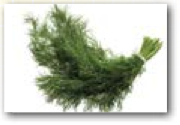
Dill: Helps your Digestion. A teaspoon a day can reduce 80 percent of bloating in only three days. Its antibacterial oils not only kill any possible stomach bugs but also help in the breakdown of carbohydrates and proteins.
Uses: Feathery texture is sharp-tasting. Great on fish, in chicken and potato salads. Used in pickling.
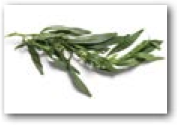
Tarragon: For Heart Health. One teaspoon daily lowered LDL cholesterol more than 40 percent while increasing good cholesterol nearly 30 percent. Tarragon contains a chemical called rutin, which boosts circulation and reduces plaque in the arteries.
Uses: Flavor of anise, licorice, mint, hay, and pine. Try it in Bernaise sauce.
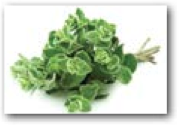
Oregano: Bacteria Be Gone. Due to the high levels of antibacterial compounds and antioxidants, oregano is just as effective at killing E.Coli and staph bacteria as penicillin.
Uses: Tastes Robust. Best in tomato dishes, usually of Mediterranean or Mexican origin.

Bay Leaf: Natural Pain Reliever. Eliminates headaches and migraines. Bay leaf is rich in eugenol, a natural anesthetic that alleviates pain.
Uses: Tastes woody. Perfect in soups, sauces, stews, and pot roasts.

Rosemary: The Brain Booster and Fatigue Fighter. With just one sniff, the phytochemicals found in rosemary can rev up your mind by increasing production of beta waves. Carnosol, a nutrient unique to this herb, fights fatigue by flushing out energy-sapping toxins from the body.
Uses: Smell rosemary sprigs to increase alertness in only five minutes. Intense pine flavor. Great on grilled meats; adds an interesting boost to chocolate desserts.
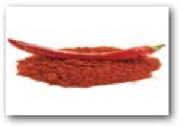
Cayenne: Appetite Suppressant and Metabolism Booster. Capsaicin, found in cayenne, has thermogentic properties that increase your blood flow and metabolism. Individuals who only use cayenne infrequently also find it reduces hunger.
Uses: Sweet heat. Works well with meats and cheeses.

Cinnamon: Controls Glucose Levels. Cinnamon contains antioxidants called polyphenols that boost levels of three key proteins responsible for insulin signaling, glucose transport, and inflammatory response. Sprinkle one half teaspoon on your food to slow carbohydrate absorption by 29 percent.
Uses: Sweet and Savory. This spice is found in almost all world cuisine. From stews to pies this spice doesn’t discriminate.
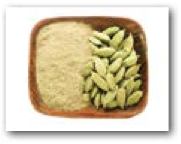
Cardamom: Treats Indigestion. Chew one teaspoon of these seeds to soothe a sour belly. The aroma and therapeutic properties of cardamom are due to the volatile oil in its seed, which contains cineol, terpinene, limonene, sabinene, and terpineol.
Uses: Pungent and sweet. This fragrant spice is used in rich curries and milk-based preparations, as well as in spice cakes and desserts.

Sage: Memory Minder. Both the phytonutrients and volatile oils in sage maintain levels of acetylcholine, a neurotransmitter that supports memory.
Uses: Piney with eucalyptus notes. Lovely addition to stuffing and pork dishes.
And our favorite Rich Food spice is . . . Turmeric
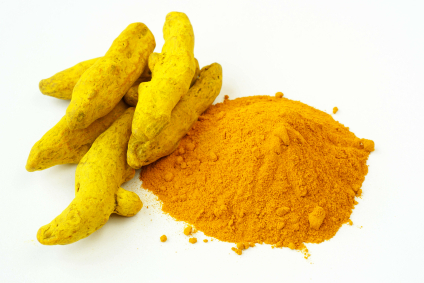
This mildly woody spice is a key ingredient in many Indian, Persian, and Thai dishes. This “poor man’s” saffron is rich in benefits. The active ingredient, curcumin, is so powerful that it is commonly made into expensive nutraceutical capsules. According to Ajay Goel, Ph.D., Director of Epigenetics and Cancer Prevention at Baylor Research Institute in Dallas, “Curcumin is a complete well-being tonic – it benefits every organ in the body… It shows promise of fighting nearly every disease.” Dr. Goel suggests that curcumin aids in the prevention of Alzheimer’s, Parkinson’s, cancer, heart disease, diabetes, arthritis, and depression.
Why not just cook up a cure in your kitchen tonight?
Curcumin Controls Blood Sugar: It switches on the liver genes that keep glucose levels in check. It improves the pancreas’s ability to make insulin and helps slow down the metabolism of carbohydrates after meals.
Curcumin Fights Cancer: It inhibits the genetic switches that allow for cancerous cell growth to occur.
Curcumin Speeds Up Metabolism: USDA research shows that is enhances cellular energy to speed metabolism.
Curcumin Clears Plaque: It removes amyloyd plaque buildup in the brain that can cause Alzheimer’s.
Making Cents
Let’s face it, organic spice jars are small and pricey, and it can take along time to use up some of these specialty ingredients. Your best bet is to buy your organic spices in the bulk section of your local health food or specialty spice store, where you can buy smaller amounts of the spices you need right away. This guarantees that your spices are fresh, loaded with flavor, and saves you money when a recipe only calls for a pinch. Buy your own glass jars online or wash out old spice jars and transfer contents from store baggies into convenient glass jars. Store them in a cool, dark place to prevent oxidative damage from light and oxygen.
Limited-Time Offer: Order Your Copy of Rich Food, Poor Food and Claim Your Free Gifts Today!

February 19, 2013
Introducing Rich Food, Poor Food
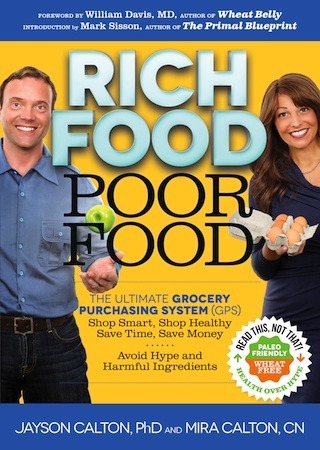 This week marks the release of Rich Food, Poor Food, the “Ultimate Grocery Purchasing System”, a book I am personally thrilled to introduce you to from Primal Blueprint Publishing. Rich Food, Poor Food is a special book in many ways, one of them being that it’s the first title from Primal Blueprint Publishing without my byline! This book was written by Jayson Calton, Ph.D, and Mira Calton, CN, a dynamic couple from Florida whose message about how to navigate past the hype and misinformation on food labels to emphasize the most nutritious foods in every category has already resonated strongly with a national audience, as it did with me. (Rich Food, Poor Food sold out at Barnes & Noble stores across the country and climbed to as high as #18 on Amazon.com after an appearance on Fox & Friends on Sunday.) Over the past couple of years – after publishing seven Primal Blueprint books of my own – it’s been my ambition to branch out beyond my voice and publish the works of other authors who promote healthy living while honoring ancestral health principles. My team and I have several books in the works right now, and the fact that the Calton’s is the first to the finish line is a quite a surprise.
This week marks the release of Rich Food, Poor Food, the “Ultimate Grocery Purchasing System”, a book I am personally thrilled to introduce you to from Primal Blueprint Publishing. Rich Food, Poor Food is a special book in many ways, one of them being that it’s the first title from Primal Blueprint Publishing without my byline! This book was written by Jayson Calton, Ph.D, and Mira Calton, CN, a dynamic couple from Florida whose message about how to navigate past the hype and misinformation on food labels to emphasize the most nutritious foods in every category has already resonated strongly with a national audience, as it did with me. (Rich Food, Poor Food sold out at Barnes & Noble stores across the country and climbed to as high as #18 on Amazon.com after an appearance on Fox & Friends on Sunday.) Over the past couple of years – after publishing seven Primal Blueprint books of my own – it’s been my ambition to branch out beyond my voice and publish the works of other authors who promote healthy living while honoring ancestral health principles. My team and I have several books in the works right now, and the fact that the Calton’s is the first to the finish line is a quite a surprise.
I first met this couple at the Ancestral Health Symposium at Harvard last year. Naturally, we got to talking books, including their ambitions to write a book about their 4SEASONSFORLIFE Revolutionary Lifestyle Program, a dietary philosophy that advocates eating in alignment with specific seasonal patterns. This project (slated for 2014 release – by Primal Blueprint Publishing of course!) was inspired by observing the dietary and lifestyle habits of remote tribes around the world on their 6 year, 100+ country research expedition called The Calton Project.
With my interest piqued about this future project, they also mentioned the imminent publication of their third book, Rich Food, Poor Food (their second book Micronutrients and Lifestyle Medicine is a text book for their Certified Micronutrient Specialist (CMS) Professional Certificate Program available through the Calton Institute of Lifestyle Medicine). That’s right – the book was completed, typeset, and slated to go on the presses the very next week! After perusing an advance copy and sharing it with my team, I was so impressed with the content that I swooped in at the 11th hour to make it a Primal Blueprint Publishing title.
One of the many things that appeals to me about Rich Food, Poor Food is that it ventures beyond the language of the Primal/Paleo eating strategy, making it more approachable to people unfamiliar with ancestral healthy principles. This is a book for everyone who shops at the grocery store, regardless of what kind of eating strategy they currently follow. The Caltons focus on the importance of micronutrients in the diet – obtaining maximum nutritional value by choosing the freshest foods with the best growing methods; choosing the brands who have sincere commitments to ingredient and manufacturing health standards; and avoiding the manipulative advertising and misleading packaging that prevails in the grocery store.
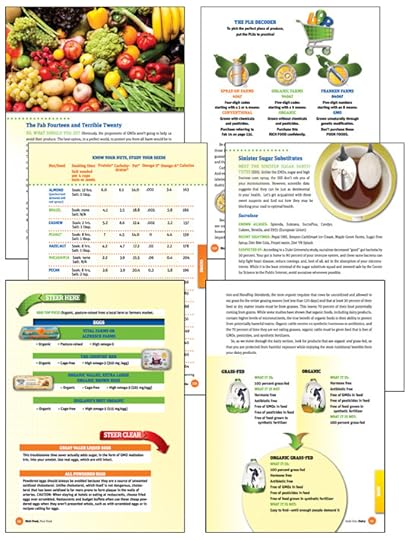
If you are a Primal veteran and believe that your diet is dialed in right now, I have news for you: you will learn some things from reading Rich Food, Poor Food. I took copious notes when I read through the text and learned several new concepts and nuances that have helped me in subsequent shopping trips. For example, I occasionally like a little grated cheese on my eggs, and there have been times when I’ve purchased pre-shredded bags (organic of course). Alas, I learned that pre-shredded cheese often contains natamycin (an antibiotic-based mold inhibitor), cellulose powder (aka. wood pulp), and anti-caking agents that often contain potato starch. Additionally, your bag of shredded organic cheese has likely sustained oxidative damage in its processing and packaging. It turns out that buying the good stuff in blocks (and shredding it fresh yourself) is a vastly superior nutritional choice.
Similarly, you’ll see a chapter on grains (horrors!) in the book, but the Caltons have a brilliant take on the subject. First, they inform the reader that they choose not to consume any grains themselves, detailing the compelling reasons we’re all familiar with. Next, they suggest superior alternatives and replacement strategies to avoid the highly offensive wheat-based products, including some clever recipes for breads and cereals that are far less objectionable than mainstream products.
Purists may choose to give me a little heat for publishing a book that dares to mention non-Primal foods, but the Caltons – and their books – share the same mission as I do – to change as many lives as possible, one-step at a time. If you have family and friends in the grain eating category, the grain chapter of Rich Food, Poor Food might just deliver the insight and inspiration they need to make some simple, positive dietary changes. The Calton’s engage the reader in a gentle, non-judgmental manner so “prospects” are not turned off, but rather inspired to make baby steps that will perhaps lead them someday to full-on Primal!
The bottom line is this, I am absolutely sure you will be greatly impressed by Rich Food, Poor Food. Like I said, there has never been another book that has made me rush out and acquire it like this one did. Whether you are a nutritional expert or new to the healthy eating arena, you will find pieces of nutritional wisdom on practically every page that you can use immediately to improve the quality of your diet. It’s a great book to send to a friend or family member who might not be quite receptive to a wholesale Primal transformation, but might appreciate some guidance in navigating the big bad grocery store. I do not endorse or recommend things lightly, so I hope that it carries the intended weight when I say that I could not endorse or recommend a book more. Rich Food, Poor Food is a book that has the power to change the world. Buy it, read it, and join the Rich Food Revolution today!
Per Mark’s Daily Apple tradition, I’ve put together an exciting limited-time offer for this book release. Order one or more copies by Feb. 22 and claim your fantastic free gifts before this special offer expires. See all the details below.
BONUS PACKAGE #1: Order 1 Copy and You Get…

1. Access to the Caltons’ Micronutrient Deficiency: The Missing Link in the Fight Against Obesity: In this 1-hour audio and slideshow presentation (pictured to the right) the Caltons explain what micronutrient deficiency is and how prevalent it is in the United States and throughout the world. You’ll also learn what happens when you become micronutrient deficient, how micronutrient deficiency is linked to obesity, and how deficiency plays a role in depression. And that’s not all. Discover what the “crave cycle” is, whether the act of dieting is making you fatter, which micronutrients are depleted by different popular diets and their epic failure to meet even RDI minimums, and learn about the Caltons’ 3 step approach to sufficiency including the ABCs of Optimal Supplementation Guidelines.
2. Exclusive access to a podcast with Jayson and Mira Calton: In this 30-minute podcast with the authors of Rich Food, Poor Food and Primal Blueprint Publishing Managing Editor Brad Kearns, the Caltons freewheel with many insightful nuggets from the book, and also reveal their interesting starting point as a team. Mira, a successful big city publicist, was diagnosed with severe osteoporosis at the ripe age of 30. With a dismal prognosis from conventional doctors, she pursued alternative therapies and landed in Dr. Jayson’s office. He transitioned her out of her low-fat, high grain SAD diet and into a nutrient rich eating pattern. Mira recovered fully, they teamed up, and the rest is history!
3. Access to my PaleoFx Seminar Presentation: In this 1-hour video recorded in Austin, Texas in March of last year at the PaleoFX symposium, I discuss how there are no right or wrong decisions in your Primal journey, only choices. I explore how to customize the Primal lifestyle to address your own unique health circumstances using self-experimentation methods. Also included is a lively Q&A session with the audience.
Here’s a highlight reel to give you taste of what the presentation is all about:
BONUS PACKAGE #1 Instructions:
Buy 1 or 2 copies from Amazon, Barnes and Noble or any other book retailer.
Fill out this form to get your bonuses.
This offer is unlimited.
BONUS PACKAGE #2: Order 3 or More Copies and You Get…
Everything above PLUS…
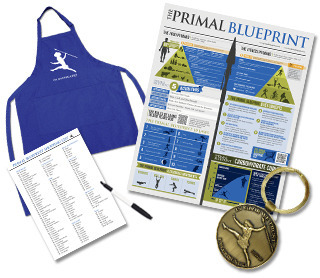
A Primal Blueprint Gift Package including The Primal Blueprint “I’m an Offal Chef!” Apron ($20), The Primal Blueprint Poster ($14.95), an “In Grok We Trust” Keychain ($8.95), and a Primal Blueprint Dry Erase Shopping List and Pen.
Order one copy of Rich Food, Poor Food to keep at home for planning purposes, one to keep in the car for shopping, and one to lend out to everyone who sees you at the store, and you’ll get this special Primal Blueprint Gift Package valued at nearly $50.
BONUS PACKAGE #2 Instructions:
Buy 3 or more copies from Amazon, Barnes and Noble or any other book retailer.
Fill out this form to get your bonuses.
This offer is limited to the first 300 form submissions.
Fine Print:
This special bonus offer ends at 11:59 pm, Feb. 22, 2013 (PST).
These bonus offers are strictly first come, first served. “Limited to 300 orders” means the 301st person doesn’t get it. The 3-Book Bonus Offer receipt submission form will automatically stop accepting entries once the limit has been reached.
All receipts must be received by 11:59 pm, Feb. 23, 2013 (PST). The forms will stop working on Feb. 24, so be sure to fill out the form and submit your pre-Feb. 23 receipt(s) by then.
On an iPhone? You won’t be able to upload your receipt from it, unfortunately. You’ll have to use a computer.
You will receive access to both videos and the podcast via email within 24 hours.
You will receive your Primal Blueprint Gift Package in the mail within 3 weeks from the end of this offer.
Orders for Rich Food, Poor Food placed prior to the announcement of this special offer will be honored for all bonus offers.
Both orders placed online and in brick and mortar retail locations will be honored.
Both domestic (U.S.) and international orders are eligible for the bonuses.
All book formats are eligible, including physical books and and digital versions (e.g. Kindle).
All three digital items – the Calton’s video presentation, the podcast, and the PaleoFX video presentation – can only be streamed online, and cannot be downloaded.
Access to all three digital items expires on May 15, 2013.
Rich Food, Poor Food is not yet available on PrimalBlueprint.com.
Get Your Copy of Rich Food, Poor Food Today!

Mark Sisson's Blog
- Mark Sisson's profile
- 199 followers



